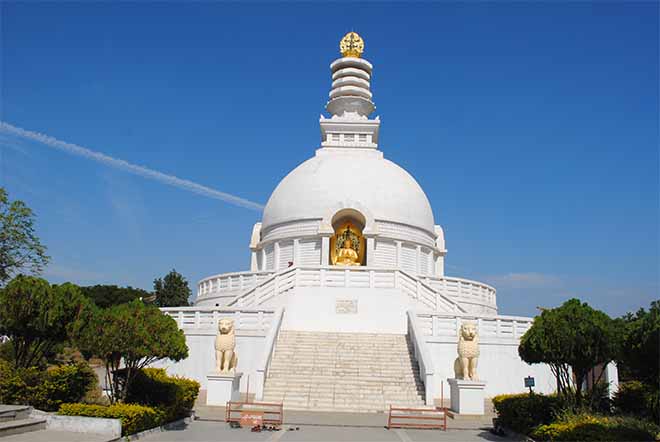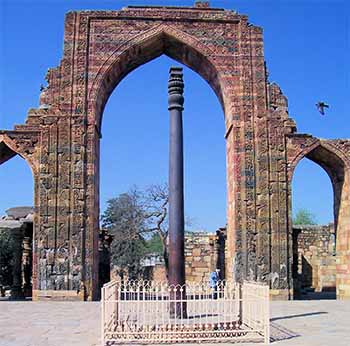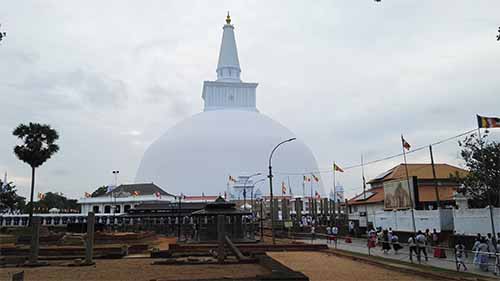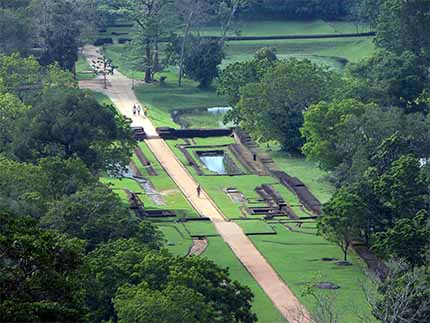4 Cool Interesting Places in Sri Lanka and India To Visit

Pataliputra: the city of the Amazons
A mythological aura surrounds the great Indian sovereign Chandragupta, a skillful strategist before whom the men of Alexander the Great had to retreat. Myths about the city he founded, Pataliputra, are also flourishing. It is said to be 3 km wide and 15 km long; that on its walls stood no less than 570 towers and that they were pierced with 64 doors. The king had an army of 60,000 infantrymen, 30,000 horsemen and 8,000 war elephants: this unbeatable contingent impressed anyone heading to the Indus Valley, towards the center of the Indian peninsula. On the ruins of Pataliputra currently stands Patna. The foundations of the city cover the gynaeceum, the legendary remains of the mythical Amazons.
According to the oldest versions of the legend, these warrior women belonged to a barbarian people, foreign to Greek civilization, and were famous for their behavior little compatible with their sex: they indeed dressed in male clothes and wielded weapons, the lance, bow or sword, fighting valiantly on foot or on horseback. On the origin of the Amazons and on the meaning of this myth, the ancients already had divergent opinions: according to the Greeks, the Amazons were the descendants of the god Ares and the nymph Harmonia, while others considered them as Scythian Amazons separated from the rest of their people. It was also said that Heracles, their sworn enemy, destroyed and forced them into exile in northern regions. In other more recent legends, the homeland of the Amazons is transferred to more western regions (Thrace, Illyria, Vindelicia) or more southern regions (Libya).
Iron pillar of Delhi

At a height of 7 meters, with a diameter slightly less than 50 centimeters, the iron pillar rises from the courtyard of a temple in Delhi, India. It is covered with Hindu engravings. Researchers believe that it dates from around the 5th century AD. The iron pillar of Delhi remains today enigmatic since the composition of the metal of its structure has not yet been precisely established.
Anuradhapura stupa

Sri Lanka is twice the size of Sardinia but it is much more populated (18 million inhabitants). The vestiges of its past include some curious buildings: emblematic figure of these constructions, the great stupa of Anuradhapura has already caused a lot of ink to flow and Westerners, in particular, continue to ask worrying questions about this building. The stupa, or burial mound above the ashes of a prominent monk, has transformed over time into a symbol of Buddhist doctrine. According to tradition, when the Buddha died, his ashes were distributed to eight tribes who, in turn, divided the ashes into 84 parts which they had to hide in stupas specially built to fulfill this function.
The stupas generally have a cylindrical or square base surmounted by a dome; their perimeter is surrounded by stones and openings hidden towards the four cardinal points. These reliquary temples lend themselves, thanks to their plan, to the ambulation of the faithful who turn slowly inside the monument, always to the right, following the ancient practice of Parikrama, a ritual that had the power to bring strength and protection.
The stupas were then decorated with more complex constructions taking the model of the temple. The latter quickly occupied an important position, inside the stupa. We can compare them to the main altars of Christian churches: they bear the name of chaitya, and over time have transformed into a set of cells and cloisters in which innumerable statues of Buddha are enthroned. The esoteric symbolism underlines a certain analogy between the form of the stupa and the body of Buddha: the different stages of the construction, like the parts of the body, would indicate each level of existence, the supreme point being constituted by the ridge which rises toward the sky.
The stupa also has the value of a cosmic symbol: it is indeed the “egg of the world” (the ashes representing the germ), but it also symbolizes the axis of the world which directly establishes a link between the Earth and the Sky.
The mandala gardens of Sigiriya

In the 5th century AD, Prince Kasyapa commissioned the grand princely palace of Sigiriya, in Sri Lanka. To realize this astonishing monument, the building capacities were put at the service of symbolic research. The latter is especially embodied by the grandiose gardens taking up a motif which seems to refer to the language of the mandala. Through an extremely complex symbolism, the mandala allows a kind of "initiation journey" which promotes inner growth by aiming for deep knowledge. In practice, therefore, the mandala is a representation of the universe including all the forces of nature and the relation which unites them, as well as the relationships between things which, for the uninitiated, seem distinct but which, on the contrary, are part of a harmonious whole. Buddhists recognize, however, that real mandalas can only be extremely diverse mental representations: physical images only represent the real mandala that must form in the mind. The physical mandala, in any case, is only painted and consecrated during the period when it is used for a ceremony. By the combination of circles, squares and other symbolic figures, the mandala testifies to the material and spiritual ties which unite the cosmic, anthropological and divine planes. In addition, the mandala plays an important role in maintaining and restoring mental balance, so much so that, in the West, Jung and his disciples have made it an object of in-depth study.









































































































































































































































































































































